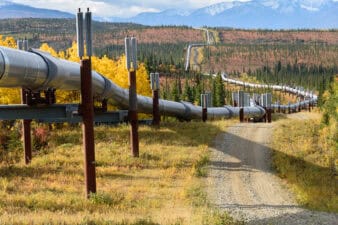The outlook for the energy patch continues to worsen with still no sign of the long-awaited recovery in crude. In recent days the price of West Texas Intermediate, or WTI, has reversed course, once again slipping below US$30 per barrel. When taking a closer look at the fundamentals, it appears that oil has yet to find a bottom, which doesn’t bode well for the patch. The pain is far from over for oil stocks.
Now what?
Despite sharply weaker prices, a significant decline in the number of operational rigs, and lower industry-wide capital expenditures, U.S. oil output remains 15% higher than it was a year ago. This is applying considerable pressure to the price of crude, and there is no sign that the massive decline in U.S. oil put predicted by a number of analysts will occur any time soon.
The sharp collapse in oil prices has been a wake-up call for the shale oil industry, forcing companies to make their operations more efficient and slash costs.
As a result, a number of major shale oil producers, such as Continental Resources Inc. (NYSE:CLR), now have particularly low cash costs. For 2016 Continental estimates that it will be cash flow neutral with WTI at US$37 per barrel and cash flow positive if WTI bounces back to US$40 per barrel.
This creates a considerable incentive for U.S. oil producers to keep pumping crude.
I also don’t expect to see any sharp drop in Canadian crude output any time soon. Not only have Canadian energy companies slashed operating expenses, but they are benefiting from a weak loonie.
You see, Canadian oil companies incur costs in Canadian dollars, but generate earnings in U.S. dollars. A weak loonie means that their cash costs per barrel have fallen substantially.
This becomes apparent when looking at integrated energy major Suncor Energy Inc. (TSX:SU)(NYSE:SU). By the end of the third quarter its company-wide cash costs were around $31 per barrel and, after allowing for the exchange rate of US$0.72, these drop to US$22 per barrel.
The same can be seen with heavily levered intermediate oil producer Baytex Energy Corp. (TSX:BTE)(NYSE:BTE). After savagely slashing expenses, it now has cash costs of $21 per barrel, which come in at US$15 per barrel after adjusting for the weaker loonie.
This means that with cash costs below the price of WTI, there is no incentive to cut oil output, and this is even more so for smaller, heavily indebted producers such as Baytex that need to keep paying creditors at all costs.
However, it does mean there will be further carnage in the patch with sub-US$30 oil likely to trigger a further round of cuts to capital expenditures and dividends in coming months.
One dividend that will more than likely not survive is Crescent Point Energy Corp.’s (TSX:CPG)(NYSE:CPG) juicy 8% yield. With crude now below US$30 per barrel and with a large proportion if its hedges unwinding during 2016, Crescent Point’s cash flows will deteriorate further, making the dividend unsustainable.
So what?
Now is not the time for investors to go wading blindly into the energy patch because any sustained bounce in the price of crude is a long way off. What is increasingly clear is that there will be further pain for the energy patch throughout 2016 with additional impairments and cost cutting ahead.






